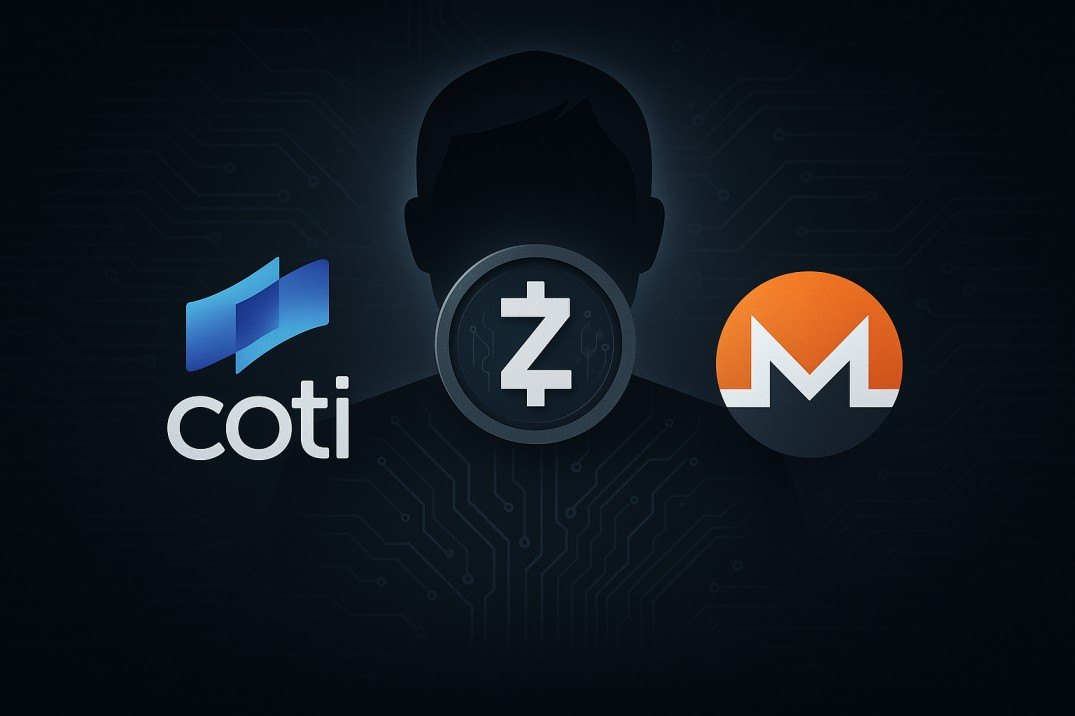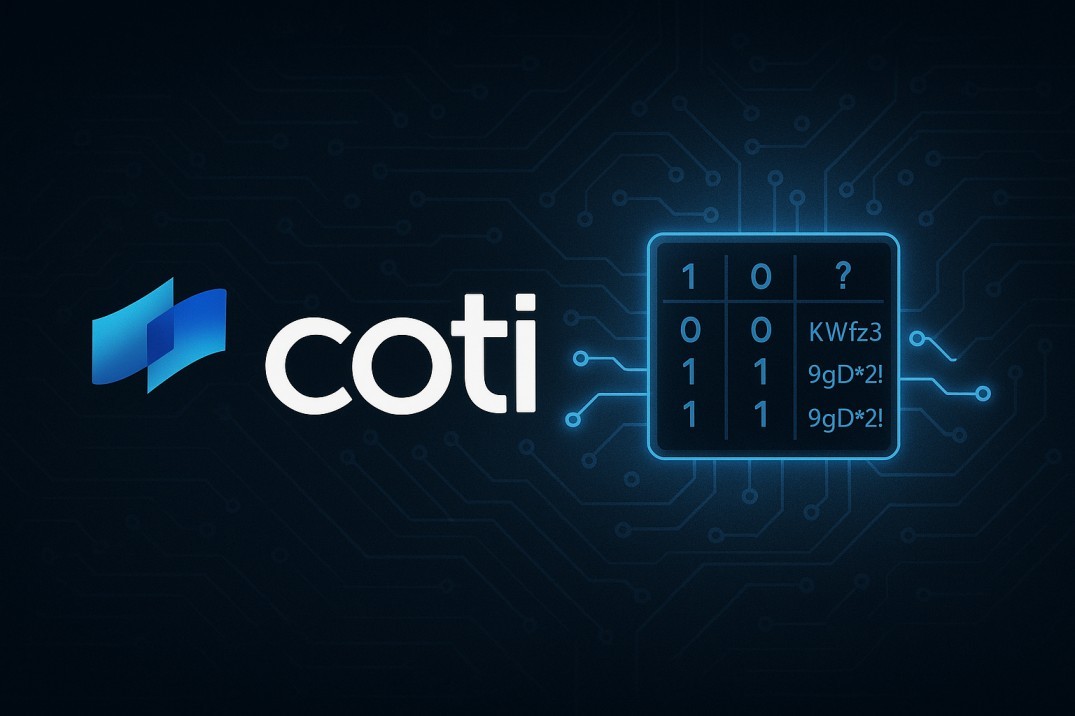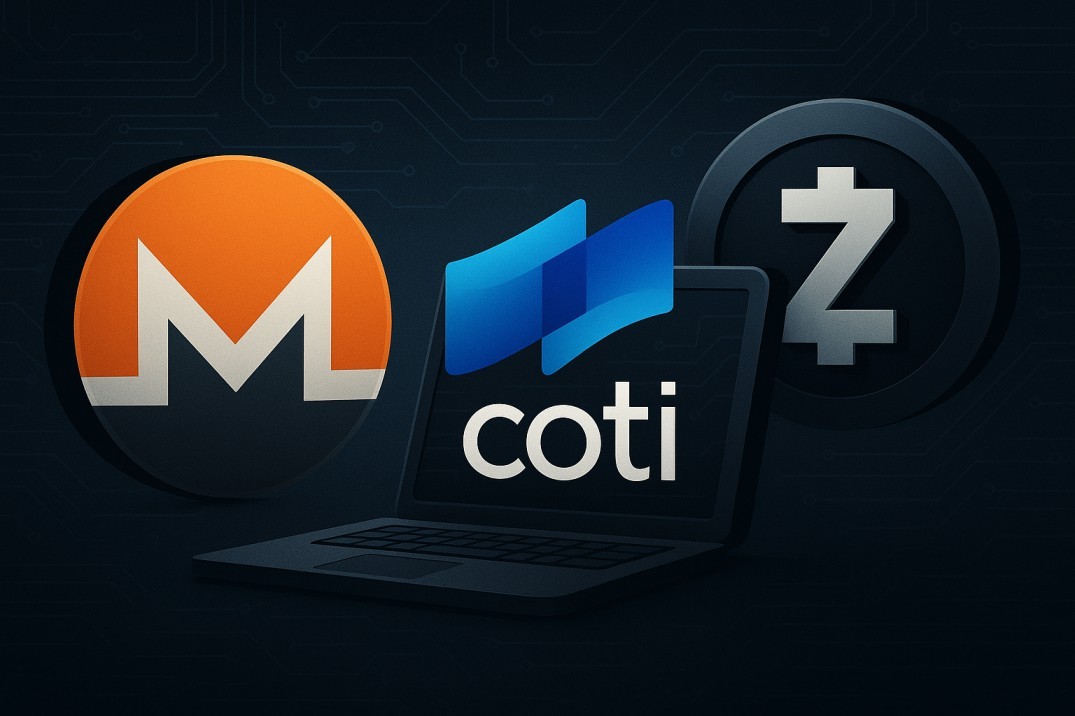TL;DR
- Monero and Zcash have long been the poster children of privacy coins, but both are under regulatory and technical pressure.
- Monero uses ring signatures, stealth addresses, and RingCT for full privacy; Zcash allows optional shielded transfers using zk-SNARKs.
- Privacy coins have faced scrutiny from regulators and exchanges; many have been delisted or restricted.
- COTI's privacy architecture (based on garbled circuits) offers a different model - one that balances confidentiality, compliance, and performance.
- Because COTI is built for private smart contracts, selective disclosure, and institutional use, it may prove more resilient in the long run than conventional privacy coins.
- In a "silent war" of privacy tech, COTI could emerge as the stable backbone while others struggle under regulatory and scalability constraints.
For over a decade, privacy coins like Monero and Zcash have fought the good fight - offering anonymity, shielding identities, and hiding transaction amounts. They became symbols of financial sovereignty. But that era is under pressure. Regulators, exchanges, and global policy shifts are testing whether pure anonymity coins can survive in a world that demands oversight.
Yet as this silent war unfolds, a newer contender is quietly building a bridge between privacy and viability: COTI. Unlike Monero or Zcash, COTI doesn't bet on anonymity alone. It layers privacy into a broader architecture built for real-world adoption. In doing so, it might outlast them.
This article explores the challenges faced by Monero and Zcash, the shifting regulatory landscape, and how COTI's cryptographic and design choices position it for the long haul.
The Legacy Privacy Coins: Promise and Pressure

Monero: Privacy by Default, Visibility by Target
Monero's strength lies in its default privacy. Every transaction is shielded using ring signatures (mixing decoys), stealth addresses (fresh destination addresses), and RingCT (hiding amounts). The result: full fungibility and anonymity by default.
But that very design has attracted attention. In 2020, the U.S. Internal Revenue Service offered a bounty for breaking Monero's privacy. Around the same time, FinCEN singled out "anonymity-enhanced cryptocurrencies" - including Monero - as limiting investigators' ability to trace flows. Many national regulators and exchanges have since delisted or limited support for Monero.
Monero also faces technical challenges. Claims have surfaced that certain mining pools may have near-51% dominance, or that chain reorganizations and heuristics may reduce anonymity sets. (For example, the Qubic founder's claim that his pool controls over 51% of Monero's hash rate.)
Zcash: Optional Privacy and Structural Constraints
Zcash took a different path: making privacy optional. Its transparent mode is like Bitcoin; its shielded mode uses zk-SNARKs to hide sender, recipient, and amount. But only a fraction of ZEC is used in shielded form. Many users default to transparent addresses for usability, fees, or convenience.
Academic analyses reveal weaknesses. For example, in a 2018 paper , Kappos et al. found that patterns in coins moving in and out of shielded pools can make users linkable by heuristics. Another study observed that many coins entering the shielded pool are later sent back to transparent addresses - reducing anonymity.
Zcash also sits in a tough middle ground. Because it supports both transparent and shielded modes, its "privacy" is conditional and optional - which dilutes the strength of its anonymity guarantees. And as regulators pressure anonymity features, exchanges sometimes respond by limiting or labeling such coins.
Regulatory Winds & Exchange Delistings
One of the greatest existential pressures on privacy coins is not technical but political. Regulators around the world view anonymity as a potential tool for money laundering, terrorist financing, tax evasion, and illicit flows.
As early as 2020, FinCEN proposed regulations restricting "anonymity-enhanced cryptocurrency" protocols, naming Monero and Zcash as examples. Exchanges too have responded. Binance began marking privacy coins with monitoring tags. Many exchanges (ShapeShift, Bittrex, OKX, Kraken) have delisted Monero, Zcash, and Dash for compliance risk.
Zcash's situation is more nuanced: only a subset of coins is shielded; many users remain in transparent pools. That makes oversight easier, but also weakens its privacy promise. In contrast, Monero's always-on anonymity is harder to regulate - and thus more frequently targeted.
This regulatory pressure affects liquidity, listing opportunities, exchange support, and user access. A privacy coin cannot survive if it cannot be traded, integrated, or regulated in major markets.
COTI's Different Approach: Privacy in the Infrastructure

COTI aims not to compete as a pure privacy coin, but to be the privacy layer for real applications. It embeds privacy into a broader architecture - giving confidentiality, selective disclosure, and institutional viability.
Garbled Circuits: A Privacy Engine for Logic
At the heart of COTI is its use of garbled circuits, a cryptographic method that allows computation of a function over encrypted inputs without revealing those inputs. In effect, you compute while keeping data hidden.
The advantage here is flexibility: private contract logic, confidential decisions, and smart contract execution can all remain private under certain conditions. Unlike Monero or Zcash, which focus primarily on transaction-level privacy, COTI extends confidentiality to computational logic and selective disclosure. COTI's documents emphasize that garbling protocols allow multi-party computation over private inputs and enable both encrypted transactions and encrypted storage, all while remaining interoperable with public state.
Performance & Latency Gains
A key hurdle for privacy infrastructure is overhead. If privacy makes operations orders of magnitude slower, adoption fails. COTI's architecture counters this by optimizing garbled circuits to be lightweight and fast.
In one benchmark study, COTI's privacy operations were shown to run in microseconds - orders of magnitude faster than comparable privacy solutions. Another write-up claims COTI V2 achieves latency improvements up to 100× over existing privacy-preserving smart contract frameworks. These gains make private logic feasible, not cost-prohibitive.
Selective Disclosure & Compliance
One of COTI's most important strategic edges is selective disclosure. Privacy is not absolute; certain data or proofs may be revealed to authorized parties (auditors, regulators) under controlled conditions. This allows COTI to navigate the regulatory demands that cripple pure anonymity coins. Institutions, enterprises, and regulated protocols can adopt privacy in a controlled, auditable fashion - without sacrificing confidentiality for users themselves.
By contrast, Monero offers no such granularity - all privacy is full and opaque. Zcash offers a form of selective disclosure, but its adoption of transparency by default weakens its privacy guarantees. Thus, COTI builds a bridge: private but not anarchic.
Ecosystem & Use Cases
COTI isn't a standalone privacy token: it underpins private DeFi, confidential identity, sensitive data workflows, and more. Because it is not built solely around anonymity, it appeals to developers, institutions, and regulated participants.
In reporting, COTI is positioned as a layer enabling privacy at the logic level - allowing smart contracts, storage, and computations to remain private under selected conditions.
Why COTI May Outlast Monero and Zcash

Given the technical, regulatory, and design realities, here are reasons why COTI may become the more sustainable privacy infrastructure over time:
1. Regulatory resilience
Because COTI's privacy is composable and auditable, it is more likely to survive regulatory scrutiny than fully opaque coins like Monero.
2. Performance & real-world usability
Its speed and low overhead make it suitable for mainstream applications - a domain where full-fledged privacy coins may struggle.
3. Broader functionality beyond transfers
Privacy of logic, not just transactions, opens new categories (private DeFi, identity, confidential workflows) beyond what Monero or Zcash typically support.
4. Selective disclosure and compliance alignment
By enabling controlled revelation, COTI bridges the gap between privacy and legitimacy.
5. Institutional and infrastructure adoption
COTI can be integrated into enterprise systems and regulated modules; pure privacy coins often face delisting or exclusion.
6. Evolving privacy roadmap on Ethereum
As Ethereum moves toward native privacy, protocols may adopt modular privacy layers (like COTI) rather than switch to wholly separate privacy coins.
In a silent war of privacy technologies, survival may depend not on hiding everything, but on hiding what matters - intelligently, selectively, and sustainably.
Final Thoughts
Monero and Zcash have earned their place in crypto's lore. Their vision, ambition, and early wins in anonymity remain inspiring. But in 2025 and beyond, privacy methods must evolve to survive - blending confidentiality, compliance, performance, and developer usability.
COTI, with its garbled circuits architecture, selective disclosure model, and scalable design, offers a different path: not anonymity for its own sake, but functional privacy infrastructure that can be adopted broadly. In the long run, that might be more enduring than anonymity alone.
The silent war for privacy isn't over - but COTI just might be positioning itself as the winner.
ALSO READ: Stay.Coti — Build Private dApps Without Writing a Single Line of Code











